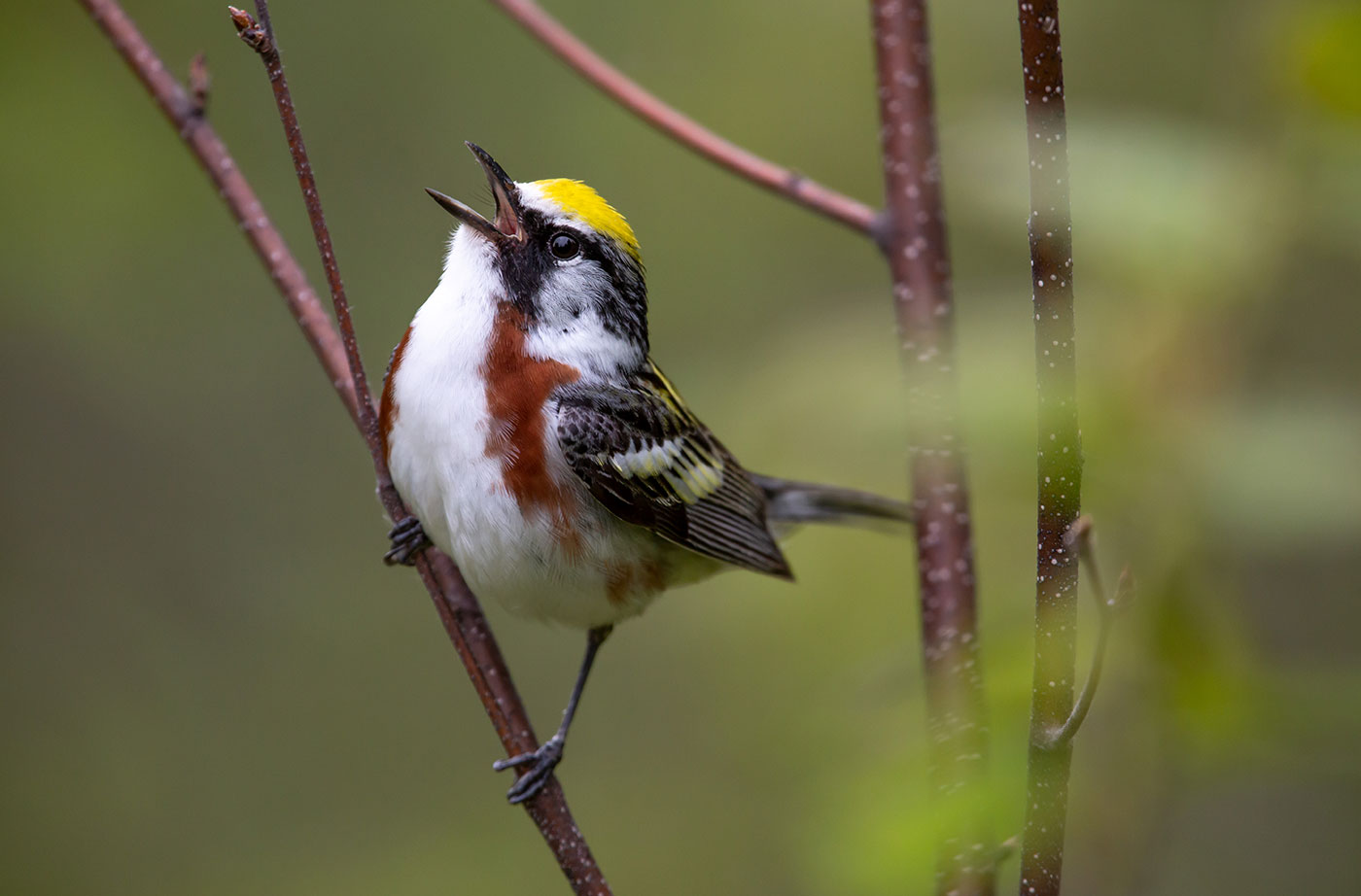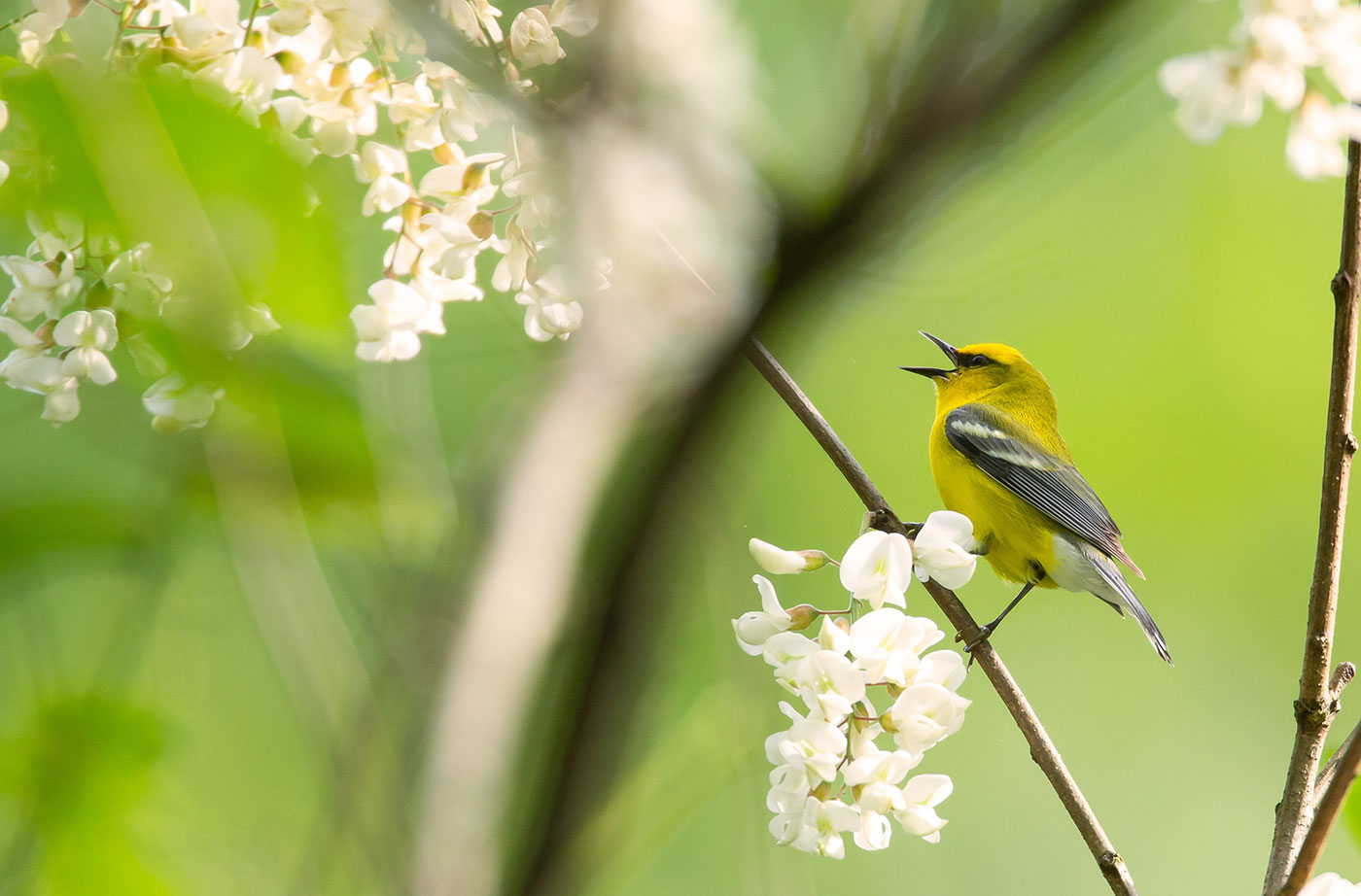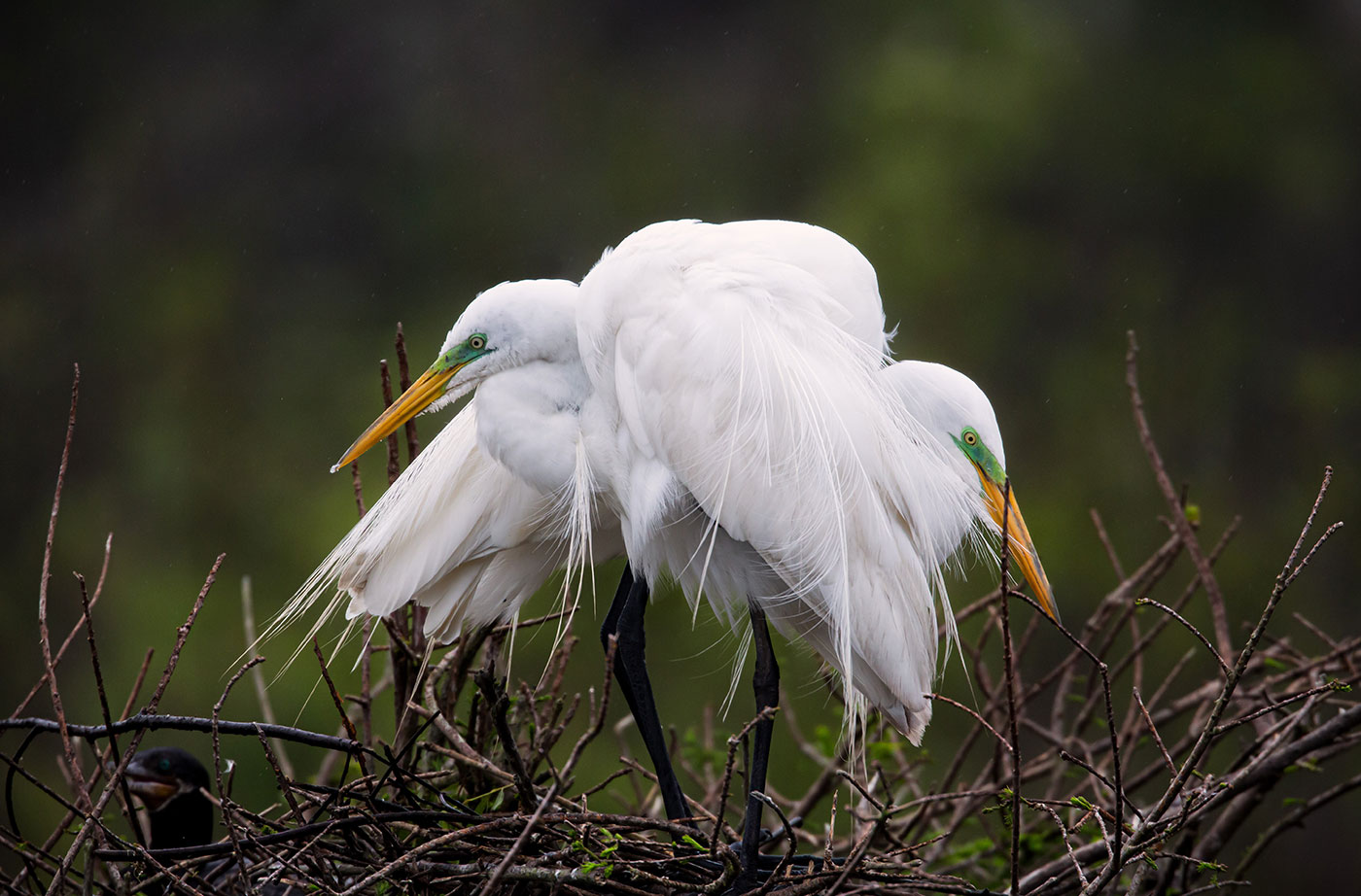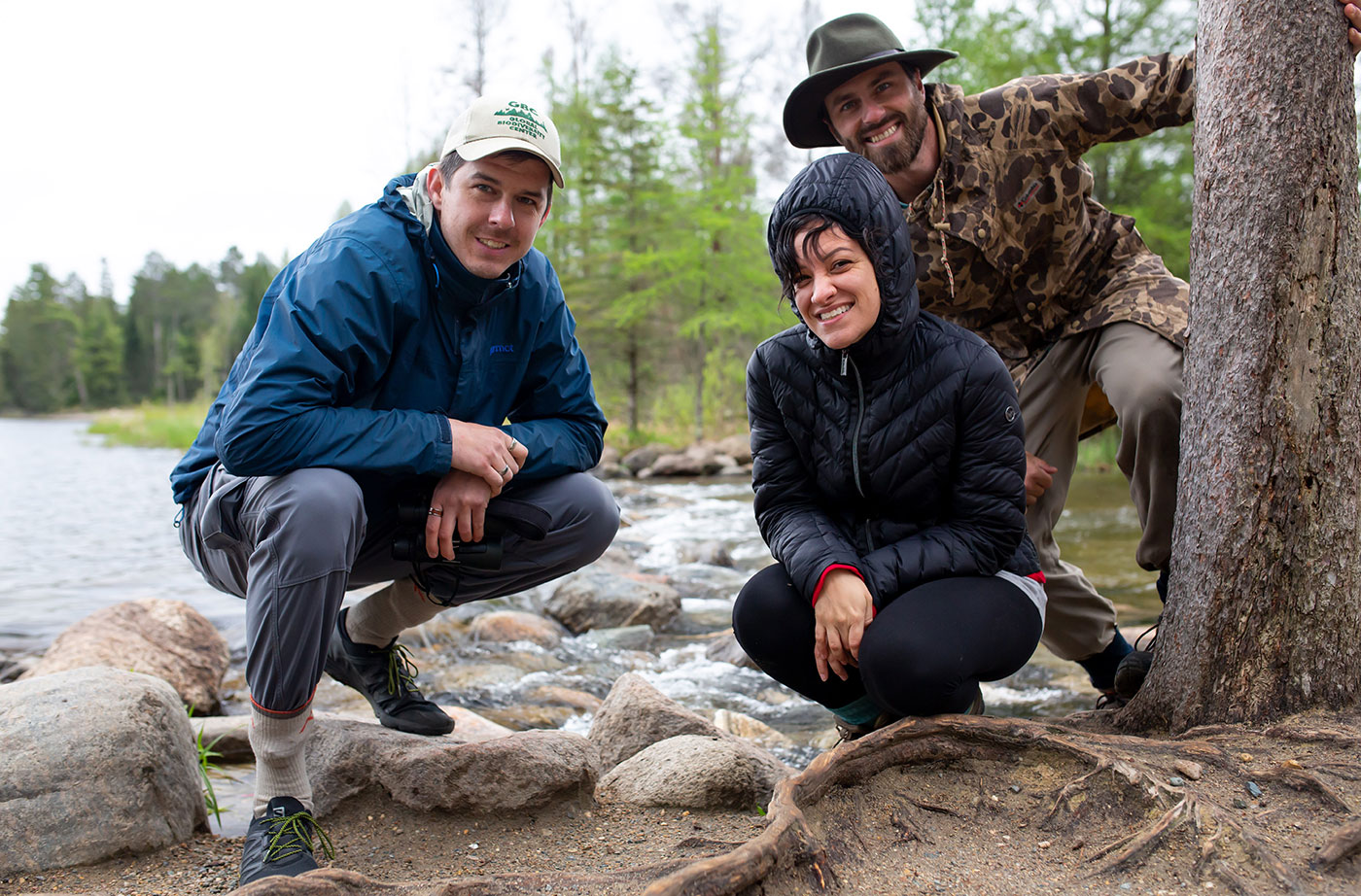Animal migrations are a natural marvel. Seeing the departure and return of birds, like sandpipers, puffins, and a number of songbirds and waterfowl, to and from Maine every year is a joyful way to mark the seasons. But have you ever considered making the journey yourself to take in the sights and sounds of a bird migration?
Dr. Jacob Job – a conservationist, communicator, and natural sounds recordist living in Colorado – set out to do just that and to draw a connection between the well-being of people and the health of the planet through a project he created called Voices of a Flyway. With the help of Portland resident and Radio Relations Manager at StoryCorps, Jacqueline VanMeter, Dr. Job traveled the Mississippi Flyway capturing the story of birds and the communities they pass through from the Gulf Coast to Minnesota.
Dr. Job kindly answered a few questions from the Natural Resources Council of Maine to help relate his work to Maine and conservation writ large.
Once you have read this interview, I encourage you to check out the Voices of a Flyway website and the podcast to learn more! —Melanie Sturm, NRCM Forests & Wildlife Director

A Chestnut-sided Warbler sings from the brush of Lake Itasca State Park, Minnesota. Photo by Tyler McClure
Why did you start Voices of a Flyway? And why focus on birds?
I started Voices of a Flyway for two reasons that are completely intertwined. First, the natural world is sick. Biodiversity is plummeting, and climate change is fundamentally altering ecosystems and our ability to safely live on this planet without fear of catastrophic threats to our existence as we know it. Secondly, the divide in how people in this country view the importance of a healthy natural world is deep and getting deeper. Considering that we all rely on clean air, water, and nutritious food, as well as access to outdoor spaces to recreate and recover in, we should absolutely be united in ensuring the health of the planet moving forward. By creating Voices I wanted to bring these issues to the forefront and clearly illustrate these basic needs, our reliance on them, and the threats we face.
I chose birds as our sort of “tour guides” on this journey because they are so accessible. They are everywhere, and they’re charismatic. People love birds. Additionally, they are the “canaries in the coal mine.” Bird biodiversity and numbers are declining rapidly as the strain we place on the planet grows worse. I wanted to let these millions of birds guide us up the Mississippi River during their annual spring migration to introduce people to these species and the places they live, while identifying the threats they face and how those are the same threats that impact us.
Why is recording voices and sounds important? Why choose this way of furthering conservation?
Aside from maybe your sense of smell, your sense of hearing has the strongest ability to conjure up memories and evoke emotions that can be leveraged to create conservation advocates. I wanted to reconnect people with our natural heritage through sound. The sounds we documented during this journey are so incredibly rich and speak to how special these ecosystems and species are. People aren’t able to effectively advocate for the protection of species and places until they are familiar with them and care about them. Sound is a powerful way to get people to care by tapping into memory-based associations from events in their past with similar sounds.
Additionally, reading about someone’s personal stories of triumph and struggle can be powerful. Listening to them tell them is everything. You can hear the joy, sorrow, hope, and pain in their voices. I wanted people to feel the stories of our participants in a way that possibly resonates with their own stories. This was my attempt to bring us all to the table in search of understanding and unity in how we view our reliance on the natural world.

A singing Blue-winged Warbler in Kentucky’s Land Between the Lakes National Recreation Area. Photo by Tyler McClure
What can people who learn about Voices of a Flyway and hear the podcast do with this information? What’s your hope for how Voices will affect people?
The most important thing they can do is internalize how much we really do rely on the natural world for healthy, sustainable lives. Throughout the entire project, the stories of the people we encountered all along the Mississippi Flyway make this abundantly clear. We rely on nature for our basic needs, economic future, and general happiness and well-being. From that, I hope people start to train themselves to view the world and other people through this lens. We’re in this together and the only way forward is by restoring the health of the planet.
I would also hope that people are inspired by the diversity of the places we visited and the species we encountered. After listening to the podcast and exploring the story maps, I want people to think nature is totally rad and worth getting to know on a meaningful level. This can mean taking notice of the birds around your yard or while on a walk in their neighborhood. It can also mean getting involved with conservation organizations to help restore habitat for species and protect places under threat.
What are some key takeaways from creating the podcast? Are there any lessons from following the Mississippi Flyway that relate to the Atlantic Flyway and Maine?
Simply put, creating a podcast takes a ton of dedication. This was a labor of love and took long hours planning out what would become the narrative of the podcast. Taking raw audio and a rough storyboard and turning it into episodes that connect with people is not easy. The podcast benefited immensely from Jacqueline’s ability to do this brilliantly. We also had to make some really difficult editorial decisions about what content to include and what to cut. The final episodes are lengthy but could have been so much longer had we included all the stories. We felt the final episodes struck a balance between including enough information to weave a clear narrative, but not overwhelm people. We leaned on the online story maps to present the remaining stories that didn’t make it into the podcast. These stories are equally valuable and can be explored at www.voicesofaflyway.com/explore.
Voices of a Flyway elevates the story of the mutual challenges that birds and humans living along Mississippi Flyway face due to our impact on the planet. However, this story isn’t unique to the Flyway. It could easily be told from within the Atlantic Flyway, from Florida to Maine. The same struggles and equally impressive natural diversity occur in this part of the country as well. In fact, this story is one that could be told all around the globe. That’s how fundamentally universal it is.

A pair of Great Egrets stand atop a nest in Smith Oaks Sanctuary, High Island, Texas. Photo by Tyler McClure
What’s next for Voices of a Flyway?
Right now we are focused on getting the story out there to as many people as possible. I am working on some written pieces about individual people and places from the project that I think are worthy of developing on their own. Because our follow-up 2020 Listening Tour back up the Flyway to share the results with the people and communities we interacted with was cancelled due to COVID-19, we are having to get creative to replace that opportunity.
I am also in production of additional episodes of the podcast that focus solely on the sounds of the ecosystems we visited. I have already posted nine of these listening experiences on our podcast feed. By listening, you can experience a thunderstorm from within a tent in Voyageurs National Park; what it’s like to sit in the middle of a heron rookery on the Gulf Coast; or be engrossed in the sounds of a deafening insect and frog chorus in the bayous of Louisiana. I will continually release additional episodes over the next year, so keep your ears open!
In another role, you work for the Natural Sounds and Night Skies Division of the National Park Service. Katahdin Woods and Waters National Monument in Maine was just designated a dark sky sanctuary. Why is that significant and why should people care?
One of the many threats that birds face is light pollution. Most songbirds migrate at night, using among many things, starlight to navigate their way. Light pollution makes this much more difficult. Light pollution also can cause birds to become disoriented and fly into buildings and other structures. This kills millions of birds every year. As the human population grows, light pollution spreads around the globe, even into our wilderness areas, meaning there are fewer places every year that aren’t impacted. Dark Sky Sanctuaries are places that have been established that have minimal impact from light pollution and are taking steps to limit further growth of light pollution. The idea is to preserve natural dark to give species a better chance of survival and to allow visitors to these places a chance to experience the wonders of a naturally dark sky. On top of these efforts, everyone can help protect birds by turning off unnecessary lights at night, especially during the migratory seasons. This will ensure our future is a very birdy future.

The ‘Voices of a Flyway’ team at the headwaters of the Mississippi River at Lake Itasca, Minnesota. Photo by Tyler McClure










This is a magical piece. Thank you so much Melanie for bringing it to Maine. You are awesome. Great interview too.